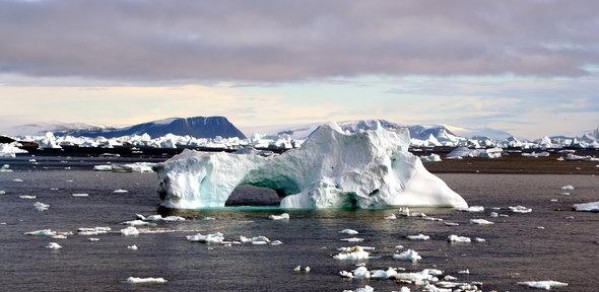
Dr Hugh Hunt will say geoengineering may be necessary to tackle climate change and refreeze the Arctic in a talk for the Cambridge Series at the Hay Festival.
At the moment we are looking at how to slow things down, but it is like a car accelerating towards a brick wall. We are not accelerating as fast as we were, but we are also not putting our foot on the brake.
Dr Hugh Hunt
Is it too late to save the Arctic without using geoengineering techniques? Dr Hugh Hunt argues this may be the case, but that people need to wake up to the scale of the climate problems we are facing.
He is giving a talk on refreezing the Arctic on 3rd June as part of the Cambridge Series at the Hay Festival.
Dr Hunt, a Reader in the Department of Engineering, says he fears people think that climate change is a problem we can do something about in the future when the urgency to act to save the Arctic is now.
“People talk about how bad things are, but they are not aware of how imminent the loss of the Arctic is. We have to start being realistic about the scale of what we have to do,” he says. “It is enormous.”
Dr Hunt says people tend to see climate engineering as some sort of “Frankenstein science”. “They think we are playing God with the climate, but we have been playing God with the climate for 200 years by burning fossil fuels,” he says. “Just because we have messed it up it doesn’t mean we can’t fix it.”
He adds: “There’s a sequence: we are losing the same amount of ice every year, but starting from less each time.” Less ice means a warmer Arctic and the likelihood of the Greenland ice shelf melting, which could see sea levels rising by seven metres, some say. In addition to that any melting of the permafrost that lies beneath the ice could result in the release of unknown amounts of methane, a potent greenhouse gas.
Dr Hunt’s talk will discuss a two-pronged approach to refreezing the Arctic. The first is through Solar Radiation Management [SRM], a form of climate engineering which involves pumping stratospheric sulfate aerosols into the atmosphere to emulate the action of volcanic eruptions which have been shown to cool the environment. He will talk in particular about the SPICE project, an SRM technique that has attracted a lot of attention as it envisages injecting aerosols into the stratosphere using a tethered balloon.
What SRM can’t do, however, is remove greenhouse gases from the atmosphere, which leads to the second approach: Greenhouse Gas Removal. Dr Hunt will speak about the SPRNGG project, a non-CO2 GGR approach that looks at air capture of the other important greenhouse gases methane CH4, Nitrous Oxide N2O and CFC12.
He says: “SRM may be urgently required to slow down the progress of melting in the Arctic. But if we’re too late and the Arctic permafrost warms up then GGR will be needed to capture billions of tonnes of atmospheric methane.”
He acknowledges people’s concerns about climate engineering and says they are justified, but believes the idea that the Arctic melting can be stopped through electric cars, not eating beef or not flying so much does not begin to address the seriousness of the situation we now face.
He adds that, although research on geoengineering has stalled, it is not that complicated and that with sufficient will and a sense of urgency it could be effective in the short term in combination with a range of other measures such as carbon capture and storage and behaviour change.
Dr Hunt believes there is a reluctance among policymakers to talk about climate engineering in case people think there is some sort of technical fix to climate change and nothing else needs to change. “Technical fixes are only ever going to be a temporary measure,” he says. They buy us time to change our behaviour. “We should never use them for any considerable length of time,” he cautions.
In the meantime, we have the Paris Agreement. Dr Hunt describes this as a strong statement of intent, but says it does not lay out a proper plan for how reducing carbon levels can be achieved.
“We have to be carbon zero by 2035 if we want to avoid the Arctic melting. That means no flying, no container shipping, electric cars, cutting gas to our homes...All this has to happen worldwide in the next 20 years,” he says.
“At the moment we are looking at how to slow things down, but it is like a car accelerating towards a brick wall. We are not accelerating as fast as we were, but we are also not putting our foot on the brake.”

